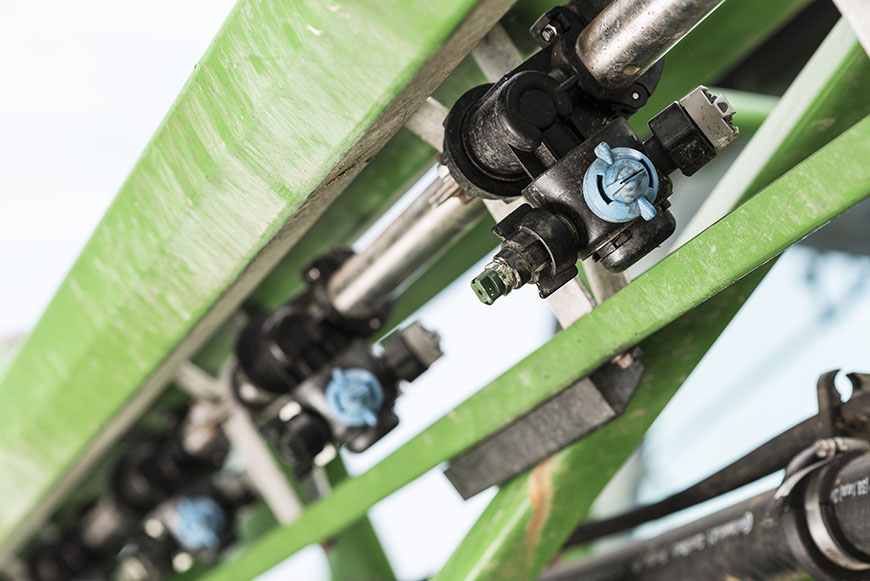Setting the Standard for Boom Spraying

The American Society of Agricultural and Biological Engineers (ASABE), a standards-developing organization for food, agricultural and biological systems, presented an award to the committee who authored ASABE S592.1: Best Management Practices for Boom. The award was presented at the ASABE 2017 Annual International Meeting held in July in Spokane, Washington.
I’m pleased that a member of our team, Lillian Magidow, research manager for Winfield United product development, served on the committee to create this international standard. Her role was to ensure that adjuvants were included in spray recommendations, because they are not used everywhere in the world, but are very important for farmers in many countries, including the United States and Canada.
S592.1 identifies, formalizes and organizes basic spray application best management practices, addressing areas not discussed on product labels and helping educate users about proper handling of spray equipment. The standard reflects advanced boom-sprayer technologies that can affect nozzle performance and the potential for off-site drift.
In addition to WinField United, the committee included representatives from equipment manufacturers, nozzle manufacturers, the agrochemical industry, university and independent researchers, and specialty sprayer manufacturers.
A voice for farmers
Lillian wanted to ensure that the standard made sense for someone who would actually use it in the field. Many times, what a farmer sees on a label started as part of an ASABE standard. So if a standard is created without farmer participation and representation, there might be something included on that label that isn’t practical or doesn’t make sense, or is less relevant for North American agriculture. And the label is the law.
Because the Environmental Protection Association (EPA) has limited resources, it depends upon standards organizations such as ASABE for guidance. We can’t tell the EPA how to assess a particular product; but if it has a question about what is a typical recommendation to a farmer, we can help guide that discussion.
We are so proud of Lillian and the committee’s accomplishments. We look forward to continuing these efforts to help give farmers a voice in critical agricultural decisions that are being made in Washington, D.C., as well as internationally.
I’m pleased that a member of our team, Lillian Magidow, research manager for Winfield United product development, served on the committee to create this international standard. Her role was to ensure that adjuvants were included in spray recommendations, because they are not used everywhere in the world, but are very important for farmers in many countries, including the United States and Canada.
S592.1 identifies, formalizes and organizes basic spray application best management practices, addressing areas not discussed on product labels and helping educate users about proper handling of spray equipment. The standard reflects advanced boom-sprayer technologies that can affect nozzle performance and the potential for off-site drift.
In addition to WinField United, the committee included representatives from equipment manufacturers, nozzle manufacturers, the agrochemical industry, university and independent researchers, and specialty sprayer manufacturers.
A voice for farmers
Lillian wanted to ensure that the standard made sense for someone who would actually use it in the field. Many times, what a farmer sees on a label started as part of an ASABE standard. So if a standard is created without farmer participation and representation, there might be something included on that label that isn’t practical or doesn’t make sense, or is less relevant for North American agriculture. And the label is the law.
Because the Environmental Protection Association (EPA) has limited resources, it depends upon standards organizations such as ASABE for guidance. We can’t tell the EPA how to assess a particular product; but if it has a question about what is a typical recommendation to a farmer, we can help guide that discussion.
We are so proud of Lillian and the committee’s accomplishments. We look forward to continuing these efforts to help give farmers a voice in critical agricultural decisions that are being made in Washington, D.C., as well as internationally.

